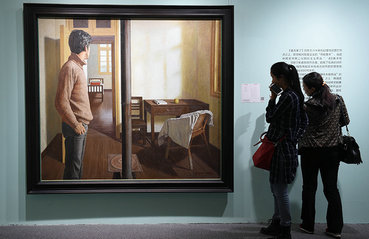China Exclusive: Pottery relics reveal China's ancient stargazers
( Xinhua ) Updated: 2016-05-31 13:50:29Their feet were firmly on the earth, but their hearts and minds were in the stars.
That's the conclusion of archaeologist after studying common household utensils used by Chinese about 5,000 years ago.
Experts at a museum in the central Henan Province have been sorting through pottery pieces decorated with drawings of the sun, the moon, constellations, solar halos and even comets.
The relics date from the New Stone Age and were found at Dahe Village, in the suburb of Zhengzhou, capital of Central China's Henan province, which is known for the oracle bones discovered in the late 19th century.
"They are the earliest physical evidence of astronomy ever discovered in China, and we believe more will be uncovered here," said Hu Jizhong, curator of the Dahe Village Relics Museum.
Archaeologists believe the star decorations reflect the close links between astronomy and agriculture.
"They watched closely changes in the stars to see if or how they would affect the harvest. They discovered regular patterns and recorded them to show their awe of nature or the heavens," said Hu.
But the stars were also part of the aesthetics of the time.
"Our research shows the people here lived free of hunger, having plenty of food, such as sorghum, millet, fish and fowls, so they could contemplate the beauty of life on their pottery. Besides stars, we can also see birds, fish, flowers and trees," said Hu.
The museum is home to thousands of pieces of the pottery discovered since the 1970s with more than 30 different patterns.
"The world of our ancestors some 5,000 years ago was not all survival, struggle and hardship," said Hu. "It had a bright side with beauty, wisdom and hope."
- Relics from 'Ancient Tea Horse Road' on display in Lhasa
- Cultural relics from 800-year-old ship on display in E China
- Relive Matera: UNESCO experience dawns on conservation of China's cultural relics
- Silk Road-themed relics exhibition opens in C China
- Chinese buyers retrace cultural relics from auction houses around world
|
|
|
|
|
|
|
|






















 Raymond Zhou:
Raymond Zhou: Pauline D Loh:
Pauline D Loh: Hot Pot
Hot Pot Eco China
Eco China China Dream
China Dream China Face
China Face






